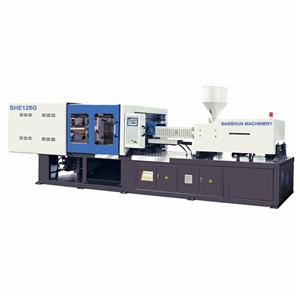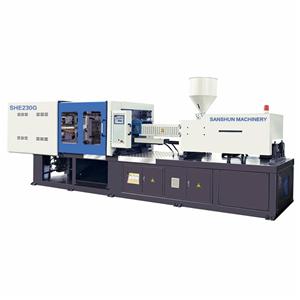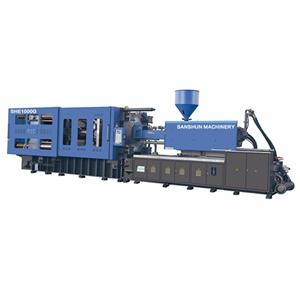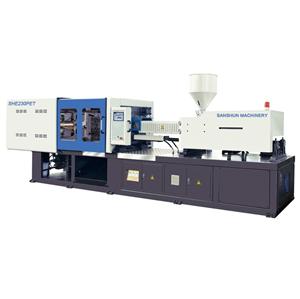- Home
- >
- News & Resources
- >
- Our Blog
- >
- Three major types of centralized lubrication systems for injection molding machines
The injection sleeve front and rear plate guide sleeves of the injection molding machine, the tie rod guide sleeve of the movable template, the sliding foot guide of the movable template, and the connecting rod pin of the toggle type mold clamping mechanism, the crosshead guide and the mold adjustment mechanism There are many forms of sliding friction pairs and the way we supply lubricant to them together forms a centralized lubrication system.
The centralized lubrication system of the injection molding machine should be divided into a lubricating oil system and a grease system according to the different lubricants used. It is generally composed of (lubrication) pumps, distributors, oil pipes and other auxiliary parts. Lubrication pumps are divided into manual pumps and automatic pumps. The automatic pump is powered by a motor or high-pressure gas and is divided into gear type and plunger-type. The gear pump has a large flow rate and low pressure, and the plunger pump has a high pressure but a small flow rate. In the automatic pump, its controller should also be involved, and all the injection molding machines are now controlled by the computer.
Due to the many lubrication points of the injection molding machine, the amount of lubricant required at each point is also different. There is also a difference in the pipeline pressure loss caused by the distance between each lubrication point and the lubrication pump. There is a flow distributor between the points, which is the core component of the lubrication system. There are three categories: impedance type, volume type, and progressive type.
Impedance
The working principle of the distributor is to set up a small channel on the pipe to increase the damping effect. It can only distribute the flow in proportion and is greatly affected by the lubricant pressure at the front and back of the distributor. This is the easiest and most economical way to solve the issue.
The so-called spiral impedance type is to insert a mandrel (like a screw) with a small gap fit on the surface of the spiral groove into the standard hole (the accuracy can be processed to H7 to H6 level), and control the depth and length of the spiral groove to control the damping. Size; the so-called small hole annular gap resistance type is to put a mandrel with a smaller diameter in the standard hole. There is an annular gap between the hole and the mandrel. The size of the annular gap can be adjusted by controlling the diameter of the mandrel. Similarly, the small hole and mandrel cannot be processed too long, so the annular can only be controlled to be smaller, so it is also prone to blockage.
Impedance distributors are currently widely used on small injection molding machines because of their compact structure, economy, easy operation and maintenance, and free increase or decrease of lubrication points.
Volumetric
The volume type distributor is divided into a pressurized volume type and a pressure relief volume type from the working principle. The so-called pressurized volumetric type refers to the pressure oil delivered by the lubrication pump pushing the piston in the metering member, forcing the lubricant that has been stored in the metering chamber last time to the lubrication point, and releasing the pressure when the lubrication pump stops supplying oil At this time, the piston is reset by the force of the spring, ready for the next oil supply.
The so-called pressure relief volume type refers to that the piston in the metering part stores oil under the impulse of the pressure oil delivered by the lubricating pump. When the lubricating pump stops supplying oil and relieves pressure, the piston discharges oil under the action of the spring force. It can be seen that the pressurized volumetric type can supply oil to the lubrication point at high pressure, and the reliability is relatively high. It can be seen from the working principle that the positive displacement distributor can only drain the oil once in one cycle of working, stopping and unloading of the lubricating pump; moreover, the spring returns slowly during unloading, which requires high-pressure relief on the main road, and its "working efficiency" Low, especially during the first test run of the injection molding machine, some parts require a large amount of oil, and the waiting time for refueling is longer.
In addition, because of the rubber, spring and other components in the distributor, the reliability and pressure resistance are not very high, which is its defect. Volumetric distributors have accurate and reliable lubricant supply, which can detect the pressure of the system. It is convenient to increase or decrease the lubrication point, but the cost is relatively high compared to the impedance type, so it is used more on medium-sized injection molding machines.
Progressive
The basic working principle of the distributor is to use hydraulic progressive action. Refers to each working plunger pair in the distributor, after following the cyclic action of the previous working plunger pair, each work completes its own plunger stroke and delivers a fixed amount of lubricant to the lubrication point.
As long as the lubricant under pressure is supplied to the distributor, the working plunger pair will run in a progressive manner and fill the oil with constant displacement. Then, once the flow of the supplied pressure lubricant stops, the working plunger of the distributor stops moving. When the lubricant with pressure starts to flow again, the working plunger in the distributor restarts its oil injection cycle at the same point.
Progressive distributors are divided into two types: integrated and slice. The integrated distributor is a whole valve body, which has a compact structure and is convenient to install. However, the valve body is generally aluminum alloy, and the screw port is easily damaged. Moreover, the gap between the working plunger and the valve body will become larger under abnormally high pressure, resulting Leakage, the progressive action will continue in error, and the integrated distributor has the same displacement per hole, making it difficult to adapt to the various oil requirements of the injection molding machine.
There are many specifications for the displacement of the distribution block, which can be matched according to different needs. It has a large degree of freedom. Its disadvantage is that it is bulky and heavy, and the joint surface between the distribution blocks will inevitably leak. A characteristic of the progressive distributor is that when a certain point is blocked, the entire sequential action will stop, which brings great benefits to our monitoring.







